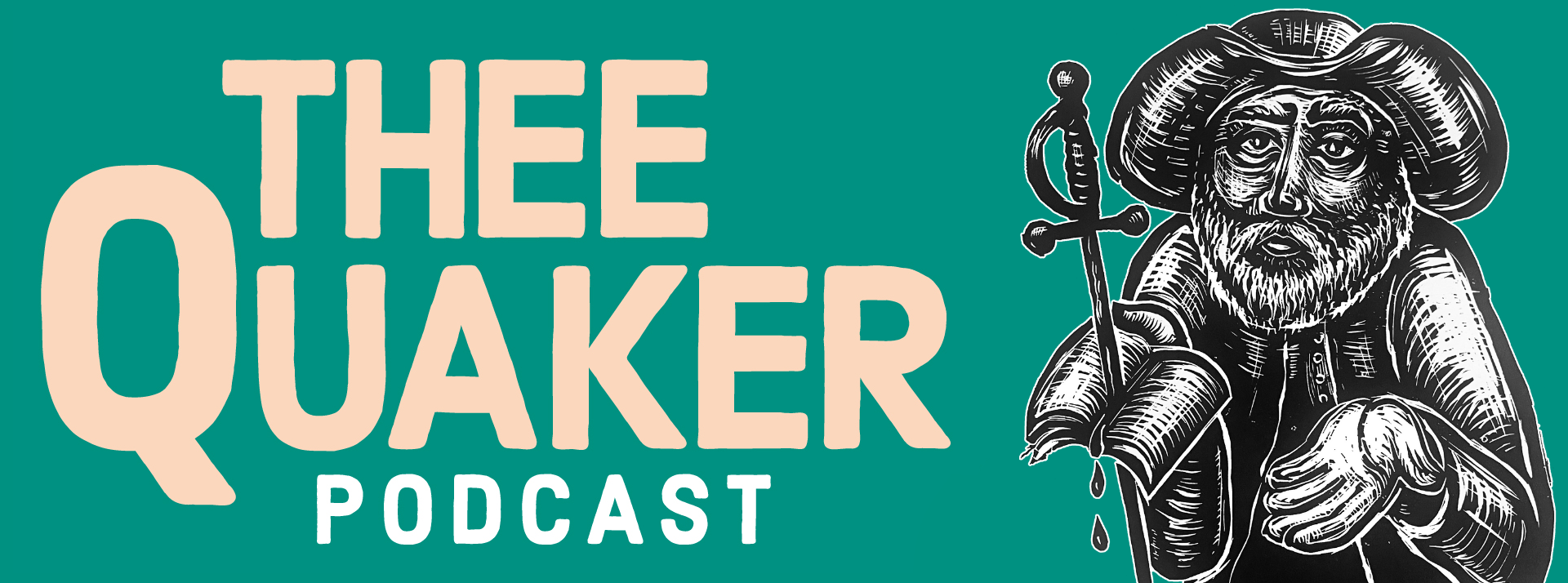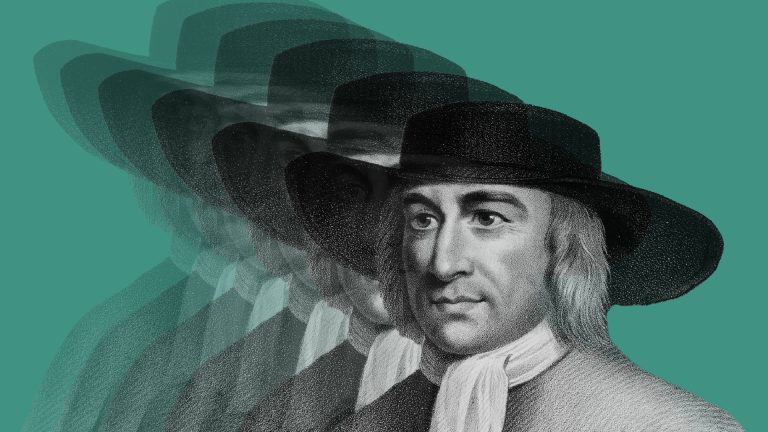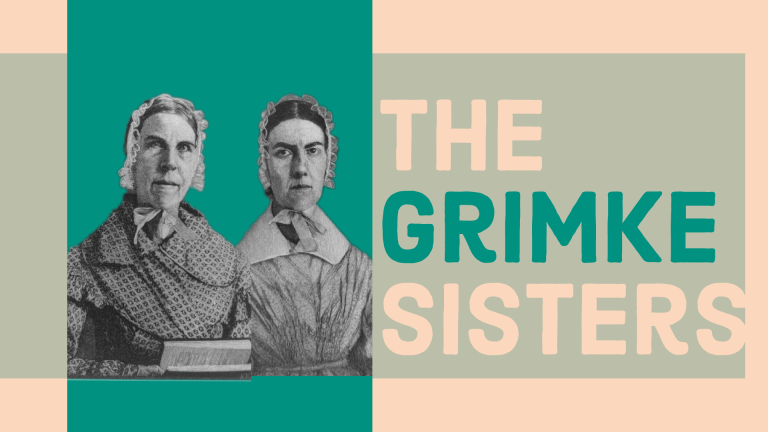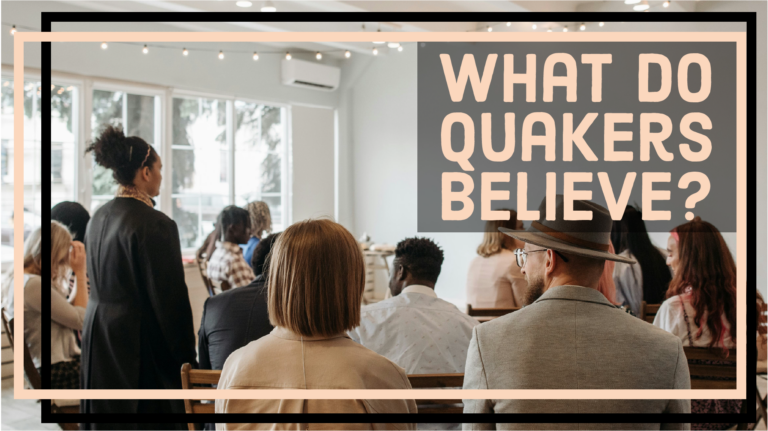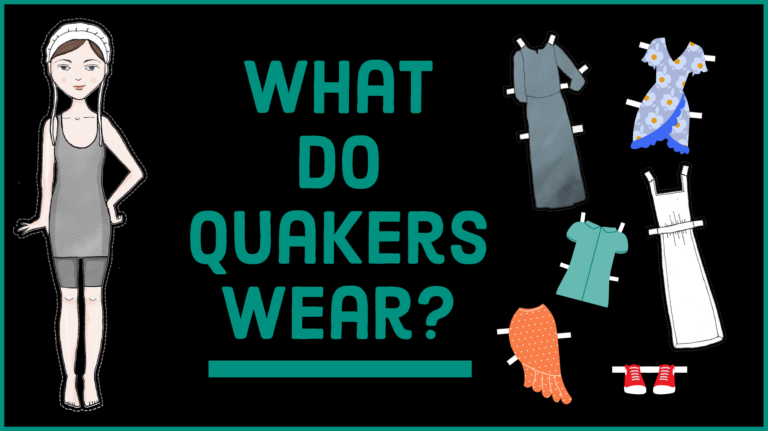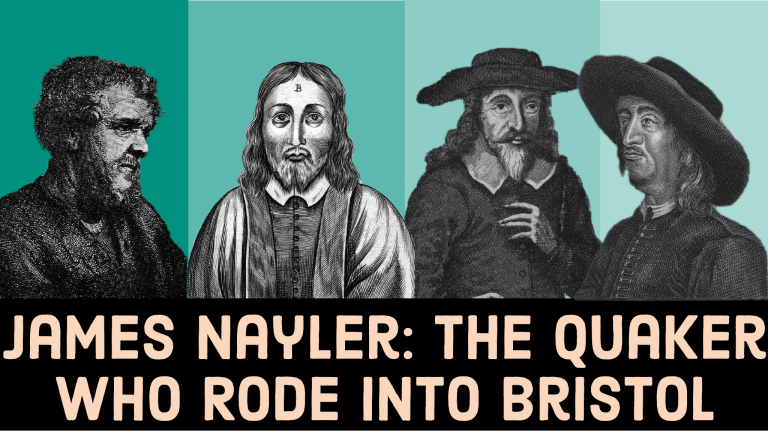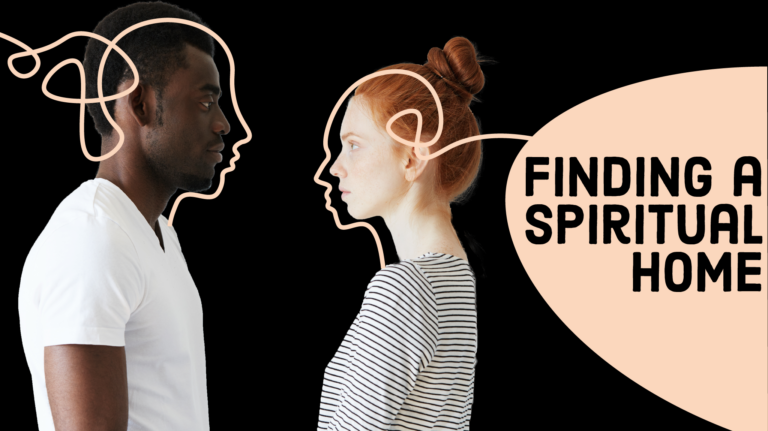Bayard Rustin: The Unseen Quaker Architect of the Civil Rights Era
Lifelong Quaker Bayard Rustin was the architect of the 1963 March on Washington, a mentor to Dr. Martin Luther King, Jr., and an international peace activist.
His identity as a gay man kept him in the shadows for decades, but he’s become something of an icon in recent years. In this episode, we explore the life and work of this groundbreaking Friend who made an indelible mark on American history.
For more on Quakers during the Civil Rights Movement, listen to our previous episode.
Subscribe so you don’t miss an episode!
Leave a comment below to share your stories and thoughts!
Download the transcript and discussion questions.
Discussion Questions
- What detail about Bayard Rustin’s life stands out the most to you? Why?
- Although Bayard Rustin is often described as the gay man who was a leader of the civil rights movement, he saw himself as a Quaker who served the movement. Are there differences in the way you see yourself and the way the world sees you? What aspects of your character are most important to you and why?
Various
Bayard Rustin
George Lakey
There aren’t words enough to describe how important he was to the movement.
Stephen Angell
He was one of those rare individuals who was extremely charismatic, but also well spiritually grounded.
David Hartsough
He had a very deep belief that we can change things.
Various
Thee Quaker Podcast. Story Spirit Sound.
Georgia
I’m Georgia Sparling
Jon Watts
I’m Jon Watts. And, Georgia, am I right that it’s Bayard Rustin day?
Georgia
It is, you are correct! Last week we looked at Quaker involvement in the Civil Rights Movement, and this week we’re continuing the theme by examining the life and work of Bayard Rustin.
Jon
Oh man, I’m so excited. It’s been kind of the year of Rustin! I’ve seen him a lot lately.
Georgia
Yeah and it’s kind of ironic. For decades, this civil rights leader was more of a footnote than an icon. And, you know, more than 30 years after his death, he’s suddenly getting the Hollywood treatment.
Jon
Right so the thing that springs to mind is the recent Netflix biopic.
Georgia
Yeah there’s that there’s several books that have been written about him recently with lots more on the way.
Jon
I heard there was a campaign to get a Bayard Rustin stamp.
Georgia
There is. The Rustin Renaissance is upon us. You know, he was never completely forgotten. Obviously, the people who knew and loved him still remember him fondly. There are a few institutes and things named after him and then back in 2013 President Barack Obama awarded him the Presidential Medal of Freedom, which was given posthumously.
Jon
Oh wow, yeah I remember that. So yeah, I do a lot of traveling among Quakers and I have noticed, certainly among Quaker communities that Bayard Rustin’s name has been increasingly referenced. As we are navigating times of increasing polarization and the potential for political violence, Bayard’s story stands out as one that we should all spend some time with. That’s part of why I was really excited when you brought his name forward as our sort of “main character” this season. I think we have a lot to learn from this story.
Georgia
Yeah I mean he was the architect of the March on Washington, and he was an out gay Quaker man. You know, there’s just so much to mine, even in that sentence.
And so today, we’re going to learn who Bayard really was, by speaking with people who knew him and with who have spent a lot of time studying his life and letters, and we’ll also hear from Bayard himself.
Jon
Great. Let’s do it.
Georgia
When Walter Naegle ran into Bayard Rustin on the streets of New York City in 1977, he knew exactly who this lanky, Black Quaker was with his graying hair and distinct accent. The two hit it off, dated, and remained together until Bayard’s death in 1987.
Walter Naegle
I was about to leave New York City, and I was down in the Times Square area, and Bayard and I were in the same corner waiting for a light to change and said hello, started talking. And the conversation went on for 10 years.
Georgia
Walter was 27 when they met and Bayard, at 65, had already experienced a lifetime of activism. He’d been imprisoned for his sexuality, for draft dodging, for his anti-war protests, he’d mentored Martin Luther King, Jr. and organized the 1963 March on Washington.
Walter
It was exciting. I mean, he was somebody that I kind of looked up to as a role model, if you will, or some kind of a heroic figure. And he was really just brilliant, of course, beautiful in his style, just the way he carried himself, very elegant, very dignified, but also very down to earth.
Georgia
But not average. That word would not aptly describe Bayard Rustin. Many people I spoke with commented on even the distinctness of his voice. Here’s peace activist David Hartsough.
David Hartsough
His voice was different than most people. I mean, it was just very clear, articulate. I mean, there was something almost like a British accent. I mean, it was just very English.
Georgia
Here’s an example from Bayard’s debate with Malcolm X in 1960.
Bayard
I believe that the great majority of the negro people, Black people, in this country, are not seeking anything from anyone. They are seeking to become full-fledged citizens.
Georgia
Bayard was not easily pigeonholed. He demanded racial equality on the steps of the Lincoln Memorial and recorded spirituals and “lute songs” in his high tenor. He was a staunch pacifist but didn’t come out strongly against the Vietnam War.
Ithaca College Associate Professor Carlos Figueroa shares this quote by Bayard:
Carlos Figueroa
He says, “My activism did not spring from my being gay, or for that matter from my being Black. Rather, it is rooted fundamentally in my Quaker upbringing, and the values that were instilled in me by my grandparents who reared me. Those values are based on the concept of a single human family, and the belief that all members of that family are equal.”
Georgia
So let’s talk about Bayard’s early years. Bayard was born in 1912 and grew up in West Chester, Pennsylvania. He was raised by his grandmother, Julia, and grandfather, Janifer.
Walter
There was a sizable African-American population, but for the most part, the races did not mix, despite the fact this was a northern town. It had been the site of Underground Railroad stations, but it was also the site for occasional Ku Klux Klan marches. So I think Bayard sort of grew up with a mixed sense of what race relations were supposed to be like.
Georgia
Bayard’s grandmother, Julia, had gone to a Quaker school as a kid.
Walter
So she really learned the fundamentals and the values and principles of Quakerism at an early age. And even though she married Janifer Rustin, who was a member of AME, African Methodist Episcopal Church, she maintained those strong Quaker values that she had learned as a child. And that was really what she transmitted to Bayard in his early age. Bayard and Julia were really rooted in Quakerism.
Georgia
Julia was also an early member of the local NAACP, and she taught her grandson to respect other races, to stand up for the Quakers, and to be confident in who he was. By the time Bayard was in high school, those lessons had solidified, and he began to take an active role in fighting inequality.
Michael
Bayard was a fabulous football player. He played tennis growing up. He also ran on the track team. He was a star track runner.
Georgia
That’s historian and Bayard Rustin biographer Michael Long.
Michael
At one point, the track team goes to Altoona, Pennsylvania, and the coach informs the track team that the white runners will stay in one place and the Black runners will stay in another place. Well, the white runners, of course, were staying in a nicer place, and Bayard and his friends decide that they’re not going to stay in an inferior place. And so they go to the coach and they say, we’re not going to run and you know Bayard’s a star runner and so are his friends. And so the coach collapses, he concedes the point and lets Bayard and his friends stay with the white kids. It’s another really formative example of his youthful work in protesting for racial justice.
Georgia
Bayard’s first arrest was also in high school.
Michael
He goes into the new Warner Theater in downtown West Chester. He is directed to the balcony and Bayard eventually refuses to stay in the balcony. He takes his seat among all the white people on the main floor of the Warner Theater and the white people freak out: we have a Black person down here. And so they get the usher and the usher comes down and tries to remove Bayard and he refuses to move, he stays in his seat. And so they call the management calls the local police and the police come and they arrest him, probably for disorderly conduct, but it’s one of the first arrests that he suffers because of his desire for racial justice.
Georgia
From jail, Bayard raised money to get himself released. I asked his partner Walter if Bayard ever mentioned being afraid. I mean, as a young Black man taking a stand by himself in the 1920s, it would certainly be understandable.
Walter
He really had a deep religious faith at that point in his life. And I think he, you know, he relied on that and he, he trusted that people in the end would do the right thing.
Georgia
After high school, Bayard attended a number of colleges, though he never graduated from any of them. In 1938, he ended up in New York City. Here’s Michael.
Michael
This was really the first place where he saw major Black protests happening. And he joins the Young Communist League. They’re one of the few progressive organizations at this point that are protesting for racial justice and he does exactly that. He protests for racial justice, and he leaves the YCL because he becomes disenchanted with their lack of focus on racial justice with the outbreak of World War II.
Georgia
During this era, Bayard also officially becomes a member of a Quaker meeting. It’s a first since the one in his hometown having been closed to Black Friends. Bayard joins the New York Monthly Meeting, which is now called the 15th Street Meeting and remains a member his whole life. During this time, he also meets labor leader A. Phillip Randolph, who becomes a mentor to Bayard.
But Bayard feels that Randolph is not pushing hard enough, so the two split for a time and Bayard joins the Fellowship of Reconciliation or FOR.
Michael
This is an international peace organization. And Bayard Rustin travels the country on behalf of the FOR, advocating for peace and nonviolence and teaching nonviolent tactics to a lot of young people, mostly in colleges and churches.
Georgia
Bayard’s work will be mirrored in the nonviolent demonstrations of the Civil Rights activism of the late ’50s and ’60s. Here’s Earlham School of Religion Professor Stephen Angell:
Stephen Angell
One of the most notable things that he did was to organize one of the first ride-ins, working on desegregating the buses and interstate travel.
In 1947 he and a group of other white and Black activists boarded Greyhound buses in Washington, D.C. and traveled south through Virginia into North Carolina where they were arrested. And, you know, he was imprisoned for 22 days with hard labor for having the gumption to get on a bus and to ride next to his white friend. We really think of those ride-ins really as something that happened in 1961. Well, this was 1947. This was 14 years before that.
Georgia
I found that fact pretty remarkable. Some 14 years before sit-ins were making national news, Bayard was at lunch counters and on buses pushing for racial equality. He was among those who laid the groundwork for nonviolent troublemaking.
Here’s Walter.
Walter
So that was where they really started experimenting with nonviolent direct action. And this went on before he went into prison for disobeying the Selective Service Act.
Georgia
Bayard originally planned to be a conscientious objector, but he changes his mind.
Michael
At this point in World War II, if you’re a CO, you can serve as a medic or something like that or you could go to a civilian public work camp. He takes a deeper dive when he looks at that and he thinks that he doesn’t want to support the war effort in any way. And so he gives up his CO status, and when he is required to report to his military induction board he refuses to do so.
And for that act, he’s thrown in jail. He’s given a sentence of three years and he serves almost that whole time in federal prison. And while he’s in federal prison, of course, he’s trying to desegregate the federal prison system. So this is a guy who has nonviolent tactics in his very core.
The prison system identified Bayard as a troublemaker. His attempt to desegregate the housing facility of a federal prison was brought to a screeching halt because a prison authority had discovered that he was having gay sex. And so, Bayard was put into solitary confinement.
You know, that wasn’t easy on Bayard and it sort of deflated him, and then later on, A.J. Musty, who headed the Fellowship of Reconciliation, approached Bayard and really encouraged him to exercise good behavior so that he could leave and travel the country denouncing the nuclear weapon.
Georgia
Bayard’s family was supportive of him and his sexuality, and he and his grandmother sent letters back and forth, sometimes exchanging scripture. A.J. Musty, the head of the Fellowship of Reconciliation, was not so understanding.
But after Bayard’s release from prison, he does continue to work, but then again, he’s caught in a sexual act. This time with two white men in a car. This is in 1953 in Pasadena, California, and all three are charged with lewd behavior.
Walter
And I think this was kind of the last straw for AJ in terms of being tolerant or being patient. So he was essentially let go by the FOR.
Georgia
Bayard returns to New York City for a time but then he hears about the Montgomery Bus Boycott, which we discussed in last week’s episode. Bayard and pacifists up north are concerned that the peaceful protests could become violent. So, Bayard heads south, straight to the home of Dr. Martin Luther King Jr. At this point, Bayard is 45, and King is 17 years his junior.
Michael
With support from other northern pacifists, Bayard travels south to Montgomery. And he arrives at Dr. King’s home and he discovers that there are armed bodyguards outside of Dr. King’s home. Inside Dr. King’s home, Bayard sees that there are weapons there as well. And so Bayard is deeply concerned about the presence of guns, and rightly so, and so when he does meet with King, the two sit down and they begin intense discussions not only about the importance of nonviolent tactics, but also the significance of adopting pacifism as a way of life. It is one thing to be nonviolent in practice. It’s another thing to be pacifist in your heart of hearts and in your actions. You can be nonviolent and not pacifist, right? Nonviolence is a tactic.
If King’s followers would see that Dr. King was a pacifist and adopting pacifism as a way of life, there would be a greater chance that they would remain nonviolent.
Georgia
Bayard recognized the influence that King could have in achieving the goals of the Civil Rights Movement.
Michael
Rustin saw that King had incredible charisma. He also recognized that King was a speaker of speakers, a preacher of preachers. He also knew that King was not the organizer of organizers. It is one thing to dream. It is another thing to put that dream into practice. Bayard once said that Dr. King could not organize a group of vampires to go to a blood bath. Hahahah. I love that.
Georgia
After Bayard leaves Montgomery, the two stay in touch.
Michael
He writes articles for Dr. King. He writes speeches for Dr. King. And in 1957, he helps Dr. King think about the importance of forming a civil rights organization that would act as King’s home base. So, it’s really part of Rustin’s vision to create the Southern Christian Leadership Conference. He wants to help launch King onto the national scene.
Georgia
That same year, Bayard is the lead organizer of the Prayer Pilgrimage for Freedom in Washington D.C. Here’s Bayard from a documentary on the march called A Time For Freedom.
Bayard
There are three ways to deal with injustice. One is to accept it slavishly or one can resist it with arms or one can use nonviolence. The significant of nonviolence is that finally one depends on ones body and ones spirit. He puts that into the breach. The man who believes in nonviolence is prepared to be harmed, to be crushed. But he will never crush others. This is what the South Leaders Conference means when they say “in our struggle not one hair of one head of one white person is to be harmed.”
Georgia
The Prayer Pilgrimage is the biggest protest that year.
Michael
That launches King onto the national stage, that makes him a national figure. And that’s partly because of Rustin’s leadership.
Georgia
Even so, Bayard’s sexuality again remains a point of contention. Bayard’s departure from Montgomery because there were rumors about a gay radical communist causing trouble.
In 1960, as A. Phillip Randolph, Dr. King and Bayard are planning a march on both the democratic and republican national conventions, they get threats from Adam Clayton Powell, Jr. He was a minister and Democratic congressman out of New York City. Unless they cut Bayard out of the event, Powell says that he will lie and tell the media that Dr. King and Bayard are having an affair.
Michael
Dr. King, remember, is in this homophobic society that considers gay people like Bayard to be sick and criminal and sinful. And he fears that he and the movement will be tainted by Bayard’s sexuality. And so he cuts Bayard out of his inner circle. And Bayard is devastated. He’s crushed.
Georgia
Here’s Bayard’s partner Walter again.
Walter
He didn’t talk about it very much during the time that we were together, but I know from people who knew him at the time that he was deeply distressed and felt, well, certainly a deep sense of hurt. So, I think he felt really let down.
But, you know, Bayard being who he was, he was not about to let a lot of grass grow under his feet. And so when he wasn’t actively working in racial justice issues, he would go back and work with the peace movement and organize demonstrations, you know, against the bomb and anti-war demonstrations and things like that.
Michael
He toiled in the shadows because of his own decision. Sure, he was pushed there by the civil rights leaders, but you know, Bayard was his own person. And I think it’s unfair to see him merely as a victim. Bayard recognized that his strength was as a strategic leader, a tactical leader, an organizational leader, and he willingly toiled in that role.
Georgia
Bayard’s time on the national stage is not done yet. He’s about to get called back up to the big leagues in what may be his most important role. That’s after this break.
Phone Ringing
Georgia
Hi, this is Georgia.
James Coulter
Hey, Georgia. How are you?
Georgia
Good. How are you doing?
James
Alright.
Georgia
I recently called up one of our monthly donors to learn more about him.
James
I’m James Coulter and I attend Sarasota Monthly Meeting in Sarasota, Florida.
Georgia
James is married with several kids, and he’s a truck driver. I called him during his work day and asked what drew him to the podcast.
James
I think what Thee Quaker Podcast has to offer fills a void for so many people. They’re searching for something and can’t quite put their finger on it. And I think Thee Quaker podcast fills it wonderfully. I want to say thank you. And thanks to Jon for doing this work.
Georgia
Thank you so much. I really appreciate it.
And we do really appreciate everyone who has joined our team of monthly donors. This show is a grassroots effort. So $5, $10, $20 or $50 a month. It really makes a difference in moving us towards sustainability and longevity. You can learn how to join our giving team at QuakerPodcast.com/support. That’s QuakerPodcast.com/support. And we’ve also got a link in our show notes. Thanks so much for considering it.
Welcome back. It’s 1963 and although Bayard Rustin has been pushed to the margins of the Civil Rights Movement, he hasn’t stopped working, and he and his mentor, A. Phillip Randolph, have reconnected. The two, along with others, are planning a big march on Washington, D.C. for the 100th anniversary of the Emancipation Proclamation. Here’s Walter.
Walter
They saw this as an opportunity to go and really focus on economic issues, that’s how the march started out, as a march for jobs, if you will. So it was really Randolph and Bayard who kind of brought Dr. King into the march.
Georgia
King and other major civil rights leaders had been hesitant to join the march but then peaceful student protests in Birmingham, Alabama turned violent at the hands of the authorities. It made international news.
Michael
They stand against German shepherds and they stand against these high-pressure hoses that are being held by white firefighters in Birmingham.
Georgia
Images of this violence horrify people across the world.
Michael
There’s this great momentum that starts to shift towards the Black Civil Rights Movement. Kennedy takes notice as well and he too becomes concerned about the violence in Birmingham. And on June 11th, 1963, he goes on national television and calls for civil rights legislation.
John F. Kennedy
This nation was founded by men of many nations and backgrounds. It was founded on the principle that all men are created equal, and that the rights of every man are diminished when the rights of one man are threatened.
Next week I shall ask the Congress of the United States to act, to make a commitment it has not fully made in this century to the proposition that race has no place in American life or law.
Georgia
All of this attention on civil rights creates the perfect storm for the March on Washington. King along with the major Civil Rights leaders recognize that now is the time to act. They join forces with Randolph. But the question is, who will organize this massive demonstration? Bayard has a proven track record and he’s clearly the best choice, but he’s still got opponents so they have to get sneaky.
King, and other leaders decide they’ll nominate A. Philip Randolph to head the march, knowing that no one will vote against him.
Michael
They also know that A. Philip Randolph will agree to do so only on the condition that he can bring Bayard on board as the main organizer.
Georgia
And it’s hard to overstate Bayard Rustin’s importance in the march. He becomes the literal architect of the whole thing. For instance, imagine 200,000 people showing up to the National Mall and only hearing this.
Martin Luther King
I have a dream that one day on the red hills…
Georgia
Instead, Bayard insisted on raising some $20,000 for a sound system, which would be more like $200,000 today. All so that everyone could hear this:
Martin Luther King, Jr.
I have a dream that one day on the red hills of Georgia the sons of former slave and sons of former slave owners will be able to sit down together at the table of brotherhood. I have a dream..
Michael
One of the beautiful things I love about the 1963 March on Washington for Jobs and Freedom is the formal program that Bayard Rustin puts together at the Lincoln Memorial. It’s a mixture of dynamic speeches, meditations, and prayers and spirituals and other music. It has this religious feel to it. And if you watch footage from the march, you can see people waving their hands, some dropped to their knees. You can see people with tears running down their eyes. That’s because of Bayard’s brilliance.
Georgia
And although he’s not on the official schedule, Bayard does get up to speak.
Michael
At the end of the march, Bayard Rustin, who had been kept in the shadows almost his entire life, comes roaring out of the shadows of Abraham Lincoln. He takes his spot at the podium in front of this huge bank of microphones, and he raises his right arm, and he makes a fist. And he leads the people in affirming each of the demands. What do you say? Bayard yells out and the people roar. Their response. It’s a beautiful moment.
Bayard
Ladies and gentlemen. The first demand is that we have effective civil rights legislation, no compromise, no filibuster and that it includes public accommodations, decent housing, integrated education, FEPC and the right to vote. What do you say?!
Georgia
Something that really impressed me about Bayard Rustin was that he had hired hundreds of people to clean up every piece of trash after that march. Every single piece. I think that demonstrates what kind of organizer he was.
And this March really pushes the needle on legislation and as I mentioned in last week’s episode, it helps to bring about the Civil Rights Act of 1964, a landmark law that barred discrimination based on race, color, religion, or national origin in public facilities.
The march isn’t just a big deal in retrospect. At the time it attracted many famous Americans, but Bayard, speaking in a 1975 interview, said that it was the everyday citizens who came that really made the difference.
Bayard
Josephine Baker flew in from Paris. We had practically every movie star on the lot, but they were not the important people. The important people were those people who hitchhiked, who came on crutches, who came in ramshackle automobiles, who walked, because that was the mass. They were the, the voice. And that’s what the President of the United States and the Congress saw.
Georgia
And the March is really what Bayard Rustin is known for, but he has a lot more work that he wants to do.
Michael
After the March on Washington, Bayard helps to develop the A. Philip Randolph Institute. And in the Institute, Bayard and others write and develop a document called the Freedom Budget for All Americans. And it calls for building a new economy, an economy that will benefit all laborers, all workers, and all workers’ families and enact the principles of democratic socialism. It’s a beautiful document. I encourage everybody to read it. It doesn’t go anywhere, unfortunately, because President Johnson is executing the Vietnam War and shifting money from the world on poverty to the Vietnam War. And in a climate like that, Bayard’s call for Jobs for All certainly falls flat.
You know what’s interesting about this time, too, is that Bayard does not take a leading role in the pacifist movement and in the fight against the Vietnam War.
Georgia
This was something that many people I spoke with brought up, especially those within the Quaker community. Here’s George Lakey, a civil rights activist who co-wrote the Manual on Nonviolent Action.
George
In the beginning of the Vietnam War, he came out against it strongly. And he was much more eloquent than I was, and I was so pleased and expected. I totally expected it of him. Then later, when he retreated I was disappointed because I was always expecting Bayard to be out there in leadership and me learning from him. And it took me years to understand that it was because he had another agenda that was so important to him, which was to build a stronger allyship among liberals for the Civil Rights Movement.
Walter
When I came along in 1977, Bayard he had returned to some of the issues that he had been involved in as a younger man, especially human, international human rights, working with the International Rescue Committee on Refugee Affairs, immigrant rights issues, working with a group called Freedom House, which was a, you know, a monitoring, human rights monitoring organization.
Georgia
During the ’70s and ’80s, Bayard traveled the globe to Cambodia, South Africa, and Haiti, advocating for human rights.
Walter
It wasn’t just about rights for people in the US. It was about trying to uplift everybody in the world so that we could have a more peaceful and just world, if you will. So he was quite involved in those activities during the time that I knew him.
Georgia
In addition to his felt absence regarding the Vietnam War, Bayard was also largely uninvolved with LGBTQ rights for most of his life.
Walter
The facts are that Bayard did not become actively involved in what we call the LGBTQ rights movement until very late in his life, the early 1980s, mid-1980s. Why?
I could speculate. He had his handful with lots of other things, for one. For two, this was a movement of very young people, for the most part, not completely, but largely young people. And I mean, I was of that age at the time and the saying was, don’t trust anyone over 30. Well, Bayard was certainly over 30 by that time. And so I don’t think it was a very welcoming atmosphere to anybody over a certain age.
Georgia
Later, as gay rights moved from more radical activism to institutionalization, Walter says that leaders in the movement began to reach out to Bayard, who for his whole life had been openly, if not vocally gay.
Walter
You know, seeing him as an elder, if you will, somebody who had fought the good fight back in his day. He was somebody who had lived his life as authentically as probably any gay man could at the time.
Georgia
While some saw inconsistencies in Bayard’s approach, others saw an overriding commitment to and interpretation of the values he was brought up with and that he maintained until his death in 1987 at the age of 75.
George Lakey says that Bayard was ultimately a team player. He remembers a time that he and Bayard had been in a meeting together where there was a decision to be made. Even though Bayard had a strong opinion about the matter, it didn’t go his way but went with the group. Afterward, George approached him.
George
Bayard, you know, I was really puzzled about, you know, you went along with the group consensus on that, and he said, hey, we need the unity. We’re not gonna get anything done if we’re not a team. So that was the high school football star. I mean, that was the guy who knew that you don’t win a football game by yourself, no matter how good an athlete you are, right? You do need the team to win.
Georgia
No doubt this also shows how Bayard put his Quaker values into practice. And throughout his life, he seems to have remained true to those beliefs. Here’s Walter describing Bayard’s worship practices later in his life.
Walter
He would go into a meditative state, if you will. Along period of thinking, discerning. That was more of his spiritual practice during the time that I knew him than actively going to meeting.
To really understand Bayard you have to understand his commitment to Quaker values, humanitarian values, the oneness of the human family, trying to search for the truth, basic Quaker value. The way you get there is by looking at all sides, examining all sides, and making a decision. Bayard did not sell out. He would not sell out in that sense. If he believed in something, he would stand up for it. Consequences be damned.
Georgia
Fellow Quaker and international peace activist David Hartsough will always remember Bayard this way.
David Hartsough
He had a very deep belief that we can change things. We don’t have to just sit idly by and watch the injustice continue to destroy people and make them second-class citizens. And so, I mean, I think that was like a beacon of light.
I think for all of us that we’re able to spend time with him.
Bayard
Well, my role was a very simple role. It was a role of saying to Martin Luther King and to A. Philip Randolph, Walter Roy Wilkins: I have certain skills. I have skills which are good at analyzing problems. I have skills that are good in planning and executing and I am a good planner. And I drew up the first plans for SCLC, because Martin asked me to. I helped plot the strategy for the Montgomery protest because he asked me to. I put on the March on Washington for all the civil rights leaders because they asked me to. And I was always comfortable with being of service to whoever were the leaders. I do not consider myself a leader. I consider myself a spokesman for a given point of view.
Georgia
Thank you for listening and thank you to our amazing guests who really shared some rich experiences and research on Bayard Rustin. I’d like ot say a special thank you to Walter Naegle for spending time talking with me and also to Michael Long whose knowledge and research really provided the backbone for this episode. You can check out Michael’s two books on Bayard Rustin, one is Bayard Rustin: A Legacy of Protest and Politics and the other is Troublemaker for Justice, a book for kids that he co-wrote with Walter Naegle and Jacqueline Houtman.
If you’d like to hear more from Bayard himself, I’ve included links to his speeches, interviews, and music on our episode page. Head over there and check it out and also leave a comment.
This episode was recorded and produced by me, Georgia Sparling. Jon Watts wrote and performed the music.
Studio D mixed the episode and your moment of Quaker Zen was read by Grace Gonglewski.
Thee Quaker Podcast is a part of Thee Quaker Project, a Quaker media organization whose focus is on lifting up voices of spiritual courage and giving Quakers a platform in 21st century media.
If you want to support our work, please consider becoming a monthly supporter. Every contribution expands our capacity to tell Quaker stories in a fresh way and makes this project more sustainable!
Visit QuakerPodcast.com for more information.
And now for Your Moment of Quaker Zen.
Grace Gonglewski
John Greenleaf Whittier, 1868, “The Meeting”
And so, I find it well to come
For deeper rest to this still room,
For here the habit of the soul
Feeds less the outer world’s control.
The strength of mutual purpose pleads
More earnestly our common needs.
And from the silence multiplied
By these still forms on either side,
The world that time and sense have known
Falls off and leaves us God alone.
Georgia
Sign up for daily or weekly Quaker wisdom to accompany you on your spiritual path, just go to DailyQuaker.com. That’s DailyQuaker.com.
We’ll be back in two weeks with our next episode.
Recorded, written, and edited by Georgia Sparling. Cohosted by Jon Watts.
Original music and sound design by Jon Watts (Listen to more of Jon’s music here.)
Mixed and mastered by Studio D.
Supported by listeners like you (thank you!!)
Referenced in this episode:
- John F. Kennedy’s Televised Address to the Nation on Civil Rights, June 11, 1963
- A Time for Freedom, 1957
- Bayard Rustin’s speech at the March on Washington
- Bayard Rustin: A Legacy of Protest and Politics by Michael G. Long
- Troublemaker for Justice: The Story of Bayard Rustin, the Man Behind the March on Washington by Jacqueline Houtman, Walter Naegle, and Michael G. Long
- Eyes on the Prize 1979 interview with Bayard Rustin
- Malcolm X and Bayard Rustin debate at Howard University
- The March on Washington from the U.S. National Archives
- The Rustin Fund
- How We Win: A Guide to Nonviolent Direct Action Campaigning by George Lakey
- Waging Peace: Global Adventures of a Lifelong Activist by David Hartsough and Joyce Hollyday
- Bayard Rustin and A. Phillip Randolph’s Freedom Budget for All Americans, annotated
